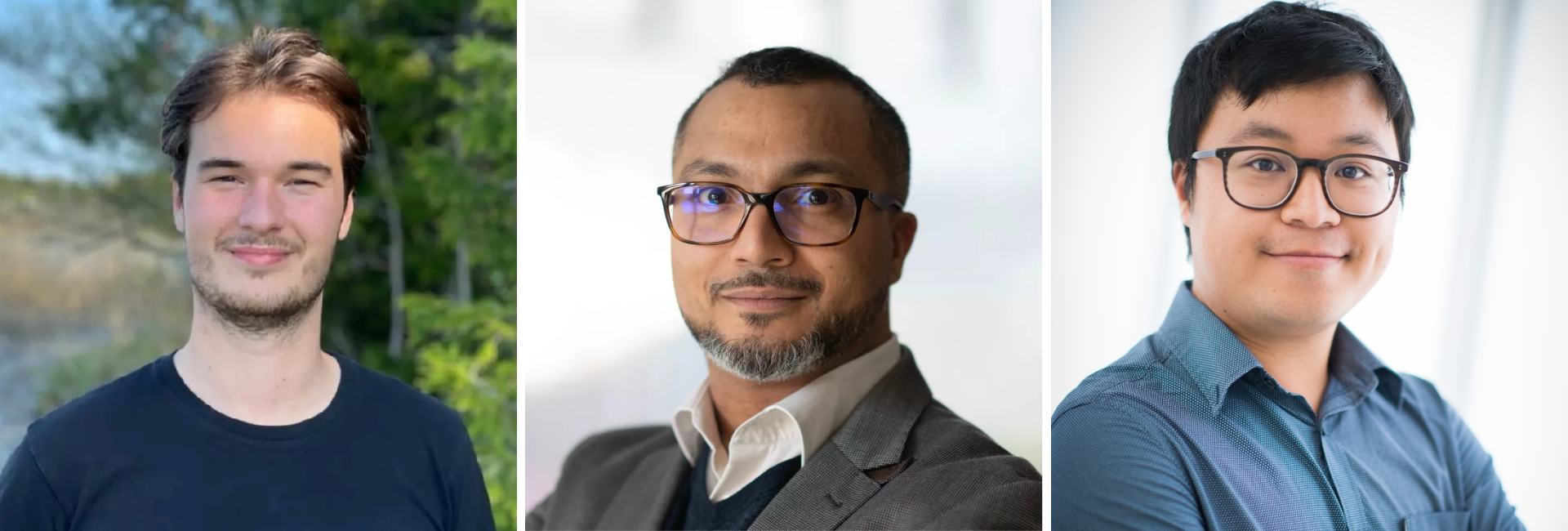Slipping into another's lab coat
Breaking down silos of expertise through peer learning

VIB Technologies launched its first job shadowing program this year to encourage peer learning and help staff tap into the breadth of expertise across its diverse cores. For its first participants, the experience was full of unexpected discoveries and valuable lessons.
When Boris Depoortere joined the VIB Data Core, he was struck by how little he knew about the Tech Watch team, despite the fact that they shared the same office space.
His experience illustrates a key challenge for VIB. The research institute is powered by a diverse array of experts who form a strong cross-cutting technology platform, but deep focus can result in specialized cores operating in isolation.
To stimulate learning between cores and improve how they work together, VIB Technologies created its job shadowing program. This is especially timely, as the next wave of biological research is built on cross-disciplinary tools. Technologies in spatial biology, for instance, rely on expertise from sequencing, imaging, proteomics, as well as metabolomics. The initiative encourages staff to look beyond their daily tasks and understand the work of other technology cores, fostering the connections and knowledge exchange that turn isolated expertise into collective capability.
Why shadow?
For shadowers in the inaugural round of the program, the appeal was clear. For Boris, it was an opportunity to shed light on the mystery of Tech Watch. For Rekin's Janky from the Nucleomics Core, the shadowing program offered a tangible way to pursue the increased cross-core collaboration he had always been interested in. The backing from both VIB Technologies’ management and his own Core manager made the decision easy. Rekin's also chose to shadow his colleagues at Tech Watch.
Shadowing also helps identify professional blind spots. "You can quickly get stuck in your own way of doing things without realizing there might be more efficient approaches," Boris explains. "Shadowing lets you catch those improvements before your habits become too fixed." The opportunity to peer over another expert's shoulder was also a way to capture tacit knowledge—those unspoken ways of working that never make it into documentation or remote conversations.
The structure of the program is simple. For example, during their one-day visit to Tech Watch, Rekin's and his colleague from the Nucleomics Core received an introductory presentation from Wai Long Tam, head of Tech Watch, followed by a lab visit with project demonstrations.

Unexpected discoveries
The most valuable discoveries centered on Tech Watch's proactive methods and why that matters for VIB as a whole. "It was interesting to see how they scout the latest patents and publications and actively approach researchers and inventors from around the world to stay at the cutting edge of technological innovations," says Boris. Understanding these methods revealed how the Tech Watch Core is built deliberately to ensure VIB doesn't fall behind as technologies evolve.
The shadowing also revealed how Tech Watch is both different from and similar to other cores. Rekin's noted that one key difference lies in their validation approach. Tech Watch performs technical validation, distinct from the biological validation that cores like Nucleomics focus on. It's a unique perspective on technologies—evaluating whether something works reliably as a tool, separate from whether it answers biological questions correctly. At the same time, Tech Watch faces familiar challenges. Rekin's noticed they encountered similar IT issues and saw potential collaboration opportunities around data analysis.
"You can't classify the activities of Tech Watch under one particular technology field because we play around with all different devices. There's a real opportunity here to strengthen each other's activities."
The host perspective
Wai is upfront about what hosting requires. "Being the one who is hosting demands a level of resources, support, and extra time invested in a person who is going to shadow your activities," he says. But he views it as a worthwhile long-term investment.
The value lies in firsthand immersion, which remote explanations can't capture. "Having the people over really allowed them to get immersed in what we meant with 'testing technologies'," Wai explains. "You can't classify the activities of Tech Watch under one particular technology field because we play around with all different devices and have a dedicated way of testing and evaluating the instruments."
This kind of understanding matters especially for a team like Tech Watch, whose work doesn't fit neatly into traditional technology categories.
The real payoff comes when this understanding creates a natural exchange of opportunities across cores. Wai hopes shadowers will think: "Maybe Tech Watch should be aware of this" when they encounter new technology. Core facility experts, with their deep field knowledge, can spot particularly promising innovations, making them valuable scouts for Tech Watch. "There is a real opportunity here to strengthen each other's activities," Wai says.
The verdict
The recommendations are unequivocal. "I would definitely participate again and highly recommend this program to everyone, regardless of their profile and job function," Rekin's says. Boris agrees: "Yes, I would like to do it again. There are many cores left to shadow! Definitely recommend it to other colleagues."
Even Wai would participate as a shadower himself. His strategy would be deliberate: shadow the cores Tech Watch doesn't already collaborate with "to try to understand their daily activities better, so that we can identify mutual points of interest."
A new call is coming soon for staff to shadow someone from a different core. For those curious about how their colleagues work, worried about professional blind spots, or simply interested in what happens beyond their own lab walls, it's an opportunity worth taking. Ultimately, it's about ensuring VIB's collective capability is ready for a future where the most exciting science happens by blurring the lines between specialized fields.